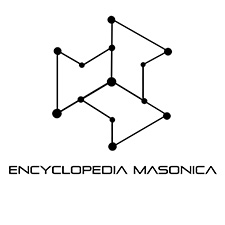
SELECT MASTER
Encyclopedia Masonica
The Ninth Degree in the American Rite, and the last of the two conferred in a Council of Royal and Select Masters. Its officers are a Thrice Illustrious Grand Master, Illustrious Hiram of Tyre, Principal Conductor of the Works, Treasurer, Recorder, Captain of the Guards, Conductor of the Council, and Steward. The first three represent the three Grand Masters at the building of Solomon's Temple. The Symbolic colors are black and red, the former significant of secrecy, silence, and darkness; The latter of fervency and zeal. A Council is supposed to consist of neither more nor less than twenty-seven; but a smaller number, if not less than nine, is competent to proceed to work or business The candidate, when initiated, is said to the "chosen as a Select Master." The historical object of the Degree is to Commemorate the deposit of an important secret or treasure which, after the preliminary preparations, is said to have been made by Hiram Abif. The place of meeting represents a Secret vault beneath the Temple.
A controversy has sometimes arisen among ritualists as to whether the Degree of Select Master should precede or follow that of Royal Master in the order of conferring. But the arrangement now existing, by which the Royal Master is made the First and the Select Master the Second Degree of Cryptic Masonry, has been very generally accepted, and this for the best of reasons. It is true that the circumstances referred to in the Degree of Royal Master occurred during a period of time which lies between the death of the Chief Builder of the Temple and the completion of the edifice, while those referred to in the Degree of Select Master occurred anterior to the Builder's death. Hence, in the order of time, the events commemorated in the Select Master's Degree took place anterior to those which are related in the Degree of Royal Master; although in Masonic sequence the latter Degree is conferred before the former. This apparent anachronism is, however, reconciled by the explanation that the secrets of the Select Master's Degree were not brought to light until long after the existence of the Royal Master's Degree had been known and recognized.
In other words, to speak only from the traditional point of view, Select Masters had been designated, had performed the task for which they had been Selected, and had closed their labors, without ever being openly recognized as a class in the Temple of Solomon.
The business in which they were engaged was a secret one. Their occupation and their very existence, according to the legend, were unknown ta the great body of the Craft in the first Temple. The Royal Master's Degree, on the contrary, as there was no reason for concealment, was publicly conferred and acknowledged during the latter part of the construction of the Temple of Solomon; whereas the Degree of Select Master, and the important incident on which it was founded, are not supposed to have been revealed to the Craft until the building of the Temple of Zerubbabel. Hence the Royal Master's Degree should always be conferred anterior to that of the Select Master.
The proper jurisdiction under which these Degrees should be placed, whether under Chapters and to be conferred preparatory to the Royal Arch Degree or under Councils and to be conferred after it, has excited discussion The former usage has prevailed in Maryland and Virginia, but the latter in all the other States. There is no doubt that these degrees belonged originally to the Ancient and Accepted Scottish Rite, and were conferred, as honorary Degrees by the Inspectors of that Rite. This authority and jurisdiction the Supreme Council for the Southern Jurisdiction of the Rite continued to claim until the year 1870; although, through negligence, the Councils of Royal and Select Masters in some of the States had been placed under the control of independent Jurisdictions called Grand Councils. Like all usurped authority, however, this claim of the State Grand Councils does not seem to have ever been universally admitted or to have been very firmly established.
Repeated attempts have been made to take the Degrees out of the hands of the Councils and to place them in the Chapters, there to be conferred as preparatory to the Royal Arch. The General Grand Chapter, in the Triennial Session of 1847, adopted a resolution granting this permission to all Chapters in States where no Grand Councils exist. But, seeing the manifest injustice and inexpediency of such a measure, at the following session of 1850 it refused to take any action on the subject of these Degrees. In 1853 it disclaimed all control over them, and forbade the Chapters under its jurisdiction to confer them. As far as regards the interference of the Ancient and Accepted Scottish Rite, that question was set at rest in 1870 by the Mother Council, which at its session at Baltimore, formally relinquished all further control over them.
